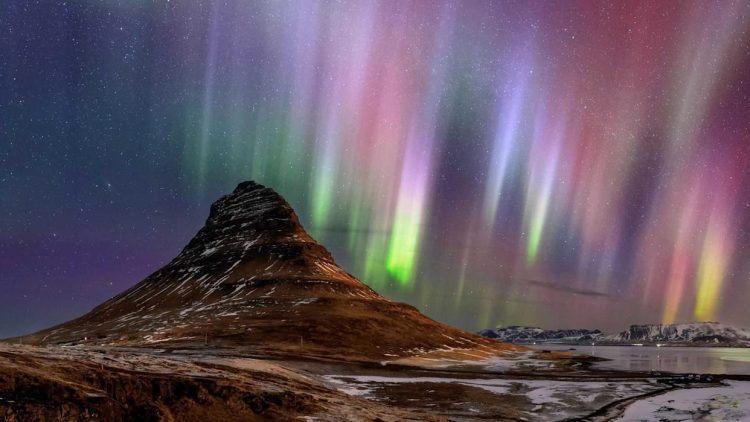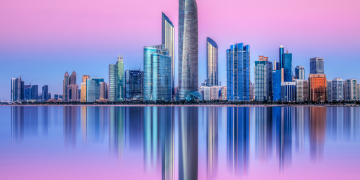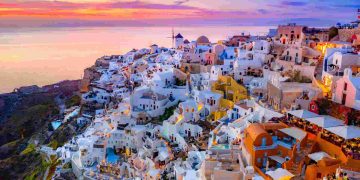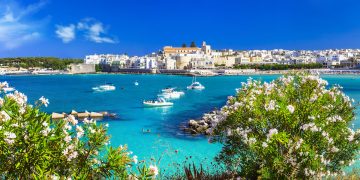There are few experiences as awe-inspiring and humbling as witnessing the Northern Lights, or Aurora Borealis, dance across the night sky. For travelers seeking to immerse themselves in natural beauty and experience something truly magical, Iceland and Norway offer unparalleled opportunities. These northernmost destinations provide some of the best vantage points to observe this celestial phenomenon, alongside their stunning landscapes, unique cultures, and outdoor adventures.
In this article, we’ll explore why Iceland and Norway are among the best places to experience the Northern Lights, the natural wonders that lie beyond this breathtaking spectacle, and essential tips to plan your dream trip.
The Magical Allure of the Northern Lights in Iceland and Norway
The Northern Lights are a natural light display in the Earth’s sky, predominantly seen in high-latitude regions near the Arctic Circle. These lights, created by solar winds interacting with Earth’s magnetic field, are often viewed as mystical, with ethereal hues of green, purple, and pink swirling and shimmering in the cold, clear night sky.
Both Iceland and Norway are renowned for their exceptional visibility of the Northern Lights. These countries offer remote, dark skies with minimal light pollution, making them perfect destinations for stargazing and Aurora viewing. Beyond the Aurora Borealis, both locations boast striking landscapes, from glaciers and volcanoes to fjords and deep forests, creating an experience that is as visually stunning as it is unforgettable.
Iceland’s Natural Phenomena: Beyond the Northern Lights—Volcanoes, Geysers, and Glaciers
While Iceland is undoubtedly one of the best places to witness the Northern Lights, it offers much more than this captivating spectacle. The land of fire and ice is home to a wealth of natural phenomena that make it a truly magical destination year-round.
Iceland’s Volcanoes and Geysers
Iceland is a geothermal hotspot, where the forces of fire and ice shape the landscape in dramatic ways. The country’s active volcanoes, such as Mount Hekla and Eyjafjallajökull, are a testament to Iceland’s dynamic geological processes. If you’re an adventure enthusiast, you can visit the Thingvellir National Park, a UNESCO World Heritage site, where you can stand between the tectonic plates of North America and Eurasia, or take a volcano tour to explore craters, lava fields, and volcanic formations.
Equally impressive are Iceland’s geothermal features. The Golden Circle, a popular tourist route, showcases the mighty Gullfoss waterfall, the Geysir geothermal area, and Thingvellir National Park, where you can see the iconic Strokkur Geyser spout boiling water high into the air every few minutes. Iceland’s natural beauty, with its powerful geysers, waterfalls, and volcanic landscapes, makes it a fascinating destination beyond the Northern Lights.
Iceland’s Glaciers
Iceland is also known for its dramatic glaciers, which cover about 10% of the country’s surface. A visit to Vatnajökull National Park, home to Vatnajökull Glacier, Europe’s largest ice cap, allows you to explore ice caves, glaciers, and ice lagoons. Jökulsárlón Glacier Lagoon is a must-see, where you can take a boat ride through floating icebergs and watch seals swim in the icy waters. The combination of glaciers and the Northern Lights creates a surreal and mystical experience that is truly unparalleled.
Norway’s Arctic Wonders: The Best Places in Norway to Witness the Aurora Borealis
Norway is another dream destination for those seeking the Northern Lights. The country’s northernmost regions, particularly in Tromsø, Alta, and the Lofoten Islands, offer ideal conditions for viewing this spectacular phenomenon.
Tromsø: The Gateway to the Arctic
Located above the Arctic Circle, Tromsø is often referred to as the “Gateway to the Arctic.” This vibrant city is one of the best places in the world to witness the Northern Lights due to its location, relatively mild coastal climate, and dark skies. Tromsø’s prime Northern Lights season runs from late September to early April, offering a long window of opportunity for travelers to catch the aurora.
In addition to the Northern Lights, Tromsø offers a host of Arctic activities, including dog sledding, snowshoeing, and whale watching. You can also visit the Arctic-Alpine Botanic Garden, the world’s northernmost botanic garden, or explore the Polaria Arctic Experience Center for an educational insight into the region’s unique wildlife and environment.
Alta: The Northern Lights Capital of Norway
Another must-visit destination in Norway is Alta, often called the “Northern Lights Capital.” Located in Norway’s far north, Alta boasts some of the clearest and most reliable views of the Aurora Borealis. The city is home to the Alta Observatory, where you can learn about the science behind the Northern Lights and enjoy breathtaking views of the night sky.
Alta is also known for its rock carvings, which are UNESCO World Heritage-listed and provide an interesting cultural contrast to the natural beauty of the region. If you’re looking for a quieter, less touristy destination than Tromsø, Alta offers a more intimate and off-the-beaten-path experience of the Northern Lights.

Lofoten Islands: Majestic Scenery and Aurora Viewing
The Lofoten Islands, located above the Arctic Circle, offer a unique combination of dramatic mountain landscapes, picturesque fishing villages, and exceptional Northern Lights viewing. The islands’ remote location and lack of light pollution make it an ideal destination for stargazing and aurora hunting.
In addition to witnessing the Northern Lights, the Lofoten Islands offer opportunities to explore the region’s stunning beaches, hike through rugged mountain terrain, and visit charming coastal villages like Reine and Henningsvær. The blend of the Northern Lights and the striking natural beauty of the islands creates a truly unforgettable experience.
Travel Tips: How to Plan the Perfect Trip to See the Northern Lights
Experiencing the Northern Lights is a dream come true for many travelers, but there are some practical tips to ensure you have the best chance of witnessing this incredible natural phenomenon.
Timing Your Trip
The best time to see the Northern Lights in both Iceland and Norway is during the winter months, from late September to early April. The darkest months, from November to February, offer the longest nights and the clearest skies, giving you the best chance to see the lights.
Location Matters
Both Iceland and Norway offer plenty of options for Northern Lights viewing, but remote locations away from city lights will increase your chances of seeing the aurora. Consider staying in rural areas or even booking an Aurora Borealis tour to maximize your viewing experience. In Iceland, areas like Thingvellir National Park or the Snæfellsnes Peninsula are popular, while in Norway, Tromsø, Alta, and the Lofoten Islands offer exceptional viewing opportunities.
Dress Warmly
Both Iceland and Norway can be extremely cold, especially during the winter months. Be sure to dress in layers, with warm clothing, insulated boots, gloves, and hats to stay comfortable while you wait for the Northern Lights to appear. A good pair of thermal socks and hand warmers can make your experience much more enjoyable.
Consider a Tour
If you’re unfamiliar with the best spots for viewing the Northern Lights, consider booking a guided tour. Experienced local guides know the best spots and times to catch the aurora, ensuring you don’t miss out on this incredible experience.
Photography Tips
Capturing the Northern Lights can be tricky, so it’s important to bring the right equipment. A DSLR camera with manual settings is ideal, allowing you to adjust the exposure, ISO, and aperture for the best shots. Use a tripod to keep the camera steady during long exposure shots, and experiment with different settings to find the perfect balance for capturing the vibrant auroras.
Conclusion
Whether you choose to explore the rugged volcanic landscapes of Iceland or the Arctic charm of Norway, both destinations offer unparalleled opportunities to witness the magic of the Northern Lights. Beyond the aurora, the natural wonders, including glaciers, geysers, fjords, and mountains, create a travel experience like no other. With the right timing, location, and preparation, you can embark on the adventure of a lifetime, witnessing one of nature’s most mesmerizing spectacles.





















